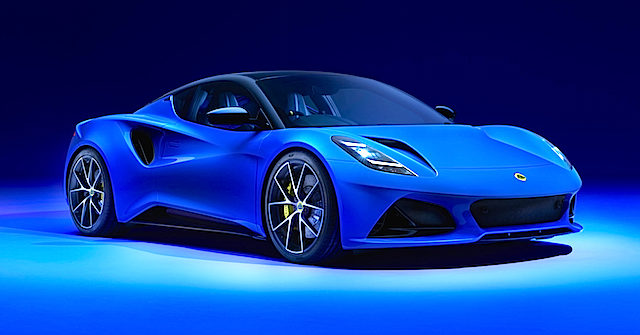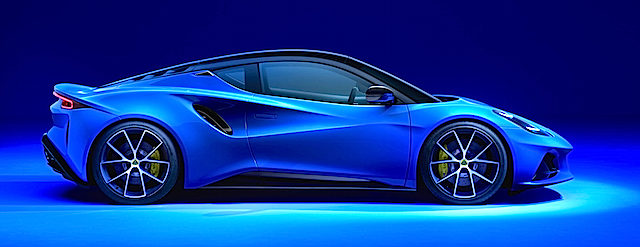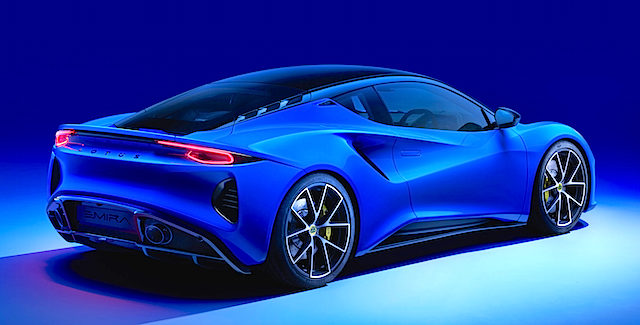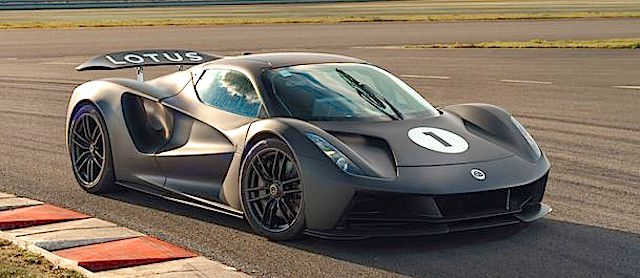
The end of the internal combustion era for Lotus is coming with the new Emira, the first new model from the British marque since 2009 and the last petrol-powered car it will produce.
As Lotus promised earlier this year, the Emira acts as both a preview of its upcoming design language – seen also in the all-electric Evija – as well as a reference to current models the Elise, Exige and Evora.
Emira weighs around 1400kg, similar to that of the premium Evora. It’s similar in size too: 4412mm long, 1895mm wide, 1225mm high. Evora measures 4395mm, 1848mm, 1229mm.
Emira sits on a lightweight bonded aluminium chassis based on what Lotus says is its improved Sports Car Architecture (SAC), a continuation of founder Colin Chapman’s ethos of “simplify, then add lightness.”
Inside, the leather-lined Emira gets a host of goodies like a 26cm infotainment touchscreen, a 32cm digital driver’s display, 12-way adjustable seats, improved interior lighting, and, as expected, a driver’s pack that firms up the suspension.
Two rear-mounted powerplants will be available when the car goes into production next year: a supercharged 3.5-litre V6 from Toyota that delivers 300kW, or a turbocharged 2.0-litre inline four from Mercedes-Benz outfit AMG that is good for 270kW.
Lotus says both engines will propel the rear-drive Emira from 0-100km/h in 4.4 seconds and on to a top speed of 290km/h. Gearboxes include manual and automatics. Emira is expected to go on sale in the UK for around £60,000 (NZ$120,000).
Meantime, the all-electric Evija hypercar (pictured below) will be the heaviest car Lotus has built, weighing around 1700kg. It is 4459mm long, 2000mm wide, and 1122mm high. But in the world of exotic EVs, Evija is a relative light weight, weighing roughly the same as the everyday Nissan Leaf hatchback.
Evija will also be the most expensive Lotus, each of its limited run of 130 production models costing upwards of US$2 million (NZ$2.6m).
What makes Evija sprint from 0-100km/h in around two seconds and on to a top speed of more than 330km/h is its muscle-bound electric powertrain. The battery pack supplies power to four motors, one on each wheel. Drive is via a single speed automatic transmission.
Lotus claims Evija generates total output of 1490kW/1600Nm. In contrast, the Aston Martin Valkyrie, a carbon-fibre hypercar which mates a 6.5-litre V12 engine with an electric motor, delivers a combined 865kW/880Nm and a top speed approaching 400km/h. The Valkyrie costs US$3.5 million (NZ$5m).
Evija has set a speed record of sorts with technology designed to charge the battery pack. It takes just 12 minutes for an 80 per cent charge and 18 minutes for a full charge. Maximum range between charges is around 400km.
A smartphone app is available that allows drivers to monitor the Evija from any location, checking on things such as battery charge status and driving range.



